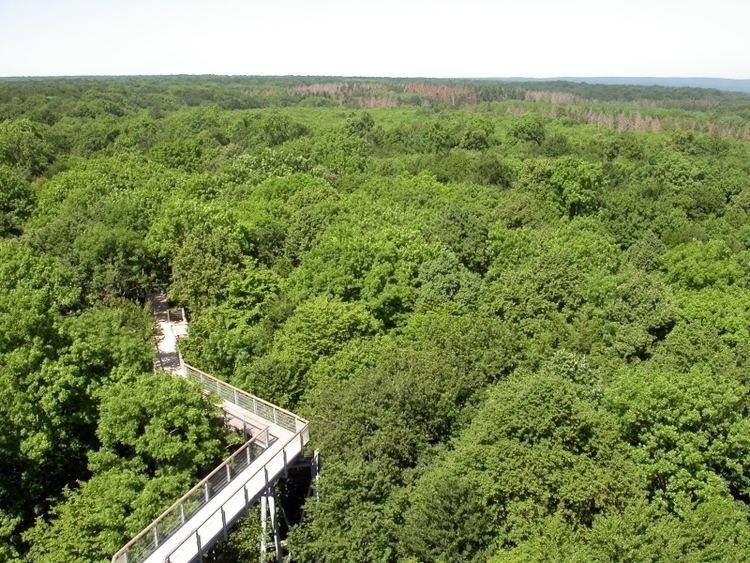Area 75 km² Established December 31, 1997 | Phone +49 3603 39070 | |
 | ||
Hours Closed now Tuesday9AM–6PMWednesday9AM–6PMThursday9AM–6PMFriday9AM–6PMSaturday9AM–6PMSunday9AM–6PMMonday9AM–6PM Profiles | ||
Hainich National Park (German: Nationalpark Hainich), founded on December 31, 1997, is the 13th national park in Germany and the only one in Thuringia. One of the main objectives of the park is the protection of native beech forest. In 2011, the park was added to the Primeval Beech Forests of the Carpathians and the Ancient Beech Forests of Germany World Heritage Site.
Contents
Geography
The 75 km2 (29 sq mi) park lies in the western part of the German state of Thuringia, east of the Werra River, and is part of the greater Eichsfeld-Hainich-Werratal Nature Park. It occupies much of the triangular area between the cities of Eisenach, Mühlhausen, and Bad Langensalza. The national park forms the southern part of the roughly 160 km2 (62 sq mi) Hainich, the largest contiguous deciduous forest in Germany.
Flora and Fauna
The Hainich Forest features a wide range of beech forest communities, with populations of ash trees, hornbeams, maples, lindens, and occasional checker trees. Many fungi can be found there, along with stands of flowers such as summer snowflakes and anemones. Animals in the park include wildcats, 15 species of bats, 7 species of woodpeckers, and over 500 types of wood beetles.
Protection of the ecosystem
The goal of Hainich National Park is to restore a large section of central European forest to its primordial state. The park covers an area formerly used for military training, with about 50 km2 (19 sq mi) of deciduous forest. In the future, the beech forest should grow to cover most of the park's area.
